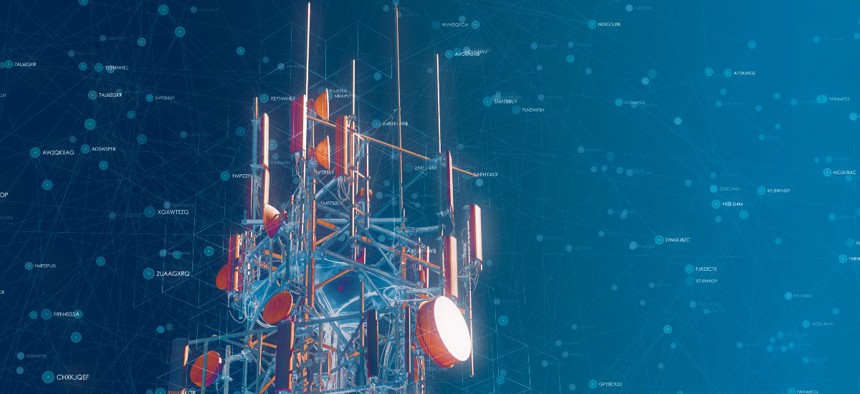Almost 9 in 10 Federal Agencies Using or Considering 5G, Per Study

dem10/Getty Images
General Dynamics Information Technology’s survey of 500 federal employees identified concerns about costs, cyber risks and integration challenges when it comes to adopting 5G capabilities.
Approximately 90% of agencies across the federal government are planning to adopt and deploy 5G technologies across their operations, despite anticipating challenges when it comes to integration, associated costs and cybersecurity, according to the results of a survey of government employees released by General Dynamics Information Technology—or GDIT—on Thursday.
The study, Enterprise to the Edge: Agency Guide to 5G, surveyed 500 federal government employees—200 from defense agencies, another 200 from civilian agencies and 100 from intelligence and homeland security agencies—to learn “where federal agencies are in their 5G adoption, the benefits and challenges they are facing and the impact this has on the mission.”
The study found that 89% of respondents are “already studying or using commercial or private 5G capabilities within their agency,” with 44% also saying that their agencies are “piloting or have deployed either private or commercial 5G.”
According to the report, respondents said that their agencies were working to utilize 5G capabilities for a variety of “foundational networking and connectivity” activities in the short term, as well as for “mission-enabling innovations and applications” to fulfill more long-term goals. The survey noted that “respondents ranked the foundational use cases higher overall than the mission enablement use cases.”
When it came to connectivity, 77% of respondents said their agencies were most interested in adopting 5G technology for improved network capabilities, followed by 61% who said platform connectivity and another 50% for improving smart infrastructure. For more intensive 5G adoption efforts, 41% of respondents ranked command and control as their “top-ranking mission enablement use case,” according to the report, with 28% listing logistics and manufacturing as their second mission-related priority.
Robert Smallwood, GDIT’s vice president of digital modernization and enterprise IT, said during a media roundtable with the press on Thursday that the report demonstrated that “the federal government is looking at 5G as an actual capability.”
The survey—which was conducted from mid-September through mid-October—found that respondents anticipate a variety of challenges, however, when it comes to implementing and managing 5G technologies. 91% of respondents cited costs and budgetary constraints as their top concern, with 87% expressing worries about an increase in cybersecurity risks and 83% identifying integration challenges as a concern.
“I don't think there are any surprises here,” Smallwood said about the adoption and deployment concerns identified in the report. “Cybersecurity is obviously top of mind for any initiative that the government undertakes nowadays. And then cost is always a factor as well. So, they realize that there's going to be a large, significant cost to get all the pieces that are required for 5G to be in place and support the various use cases that they see in their environments.”
The survey found that respondents’ cited concerns were not likely to slow the adoption and implementation of 5G technology across federal agencies. 58% of those surveyed said that they saw 5G as a top investment priority for their agencies over the next 12 months, with that number growing to 82% over the next five years.






